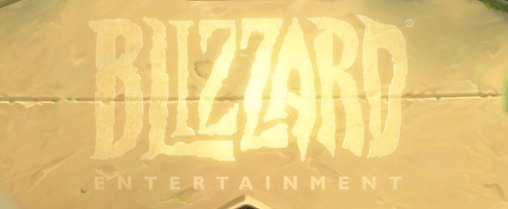Designing a tournament system for Hearthstone
This is an article that’s been a while coming. As Blizzard’s promised eventual observer mode has been sat in publishing limbo for some time now, we've all had more than enough time to speculate not just on what the observer mode might bring with it, but also what else we might hope for in terms of tournament support inside of the game. This is an article about those features, with inspiration taken from other esports games present and past. What will be discussed here is not just the bare minimum, but the gold standard for a modern esports game, and what a game as popular as Hearthstone actually deserves.
The features suggested are all intended only as a template for what could be done on the PC version of the game. A simplified spectator mode only would likely be ideal for the portable versions of the game, as those aren't realistically intended to be platforms for the true competitive elements of the game.
What will not be covered in this article and what Blizzard should also consider are the related benefits that can be reaped through supporting teams inside of the game, allowing players to analyze their own play and their results through various statistical measure and generally quality of life improvements for players and teams outside of the competitive system.
Beyond an observer mode
Observer mode is a simple enough concept, it’s just a means to get around the issues that casters face currently with having to swap around back and forth between the two different points of view. But if this is all we look for it to do, by most standards we’re setting the bar fairly low.
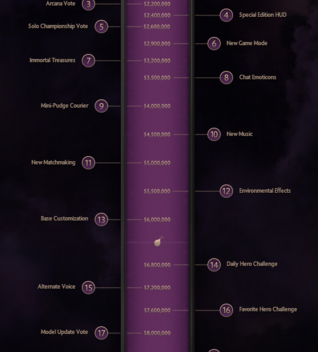
One feature which should definitively be included is in-game spectating. This was popularized by Dota 2 and their DotaTV function, which allows for fans to watch games using the game client. While the benefits provided in Dota, where you can move around the camera yourself and check up on different bits of information, may not be replicated in Hearthstone, this is only part of the equation. Viewing in-game can provide a good alternative to lagging streams and to individuals with less than stellar connectivity, as only the commentary and gameplay need to be carried over, as opposed to high resolution video. As the scene grows and commentary in multiple languages becomes a thing the spectator mode should also allow for choosing between different commentators, each occupying their own channel. In order to facilitate this type of in-game spectating the game also needs a lobby system, where casters can be assigned and players can take their places. Any games taking place through a tournament lobby could then also be controlled, for example by muting incoming messages to players while a lobby game is in progress, as well as a myriad of other potential settings (more on those later).
The natural offshoot of the spectator mode is the tournament ticket system. This allows not only for tournaments to cover a portion of their costs and fund future tournaments via ticket sales, but also allows fans to support the content they like directly, as a portion of the ticket sales should go to the tournament organizers in question. This also opens up for the crowdfunded tournament prize system which, at the moment of writing, is only days away from having raised the prize pool of this years biggest Dota 2 event from an impressive 1.6 million USD to 10 million USD, an increase of 525%. The crowdfunded tournament model currently works based on the tournament organizer giving up a portion of their cut of the ticket sales with the game developer, wanting to support the competitive elements of their game and gain publicity through this means, gives up an equal share, which are then added directly to the prize pool. The norm that we've seen so far in Dota 2 for tournaments not put on by Valve themselves is between a 35% and 200% increases on top of the base prize pool.
Supporting tournament organizers, teams and players
Now if we embrace tournament organizers, giving them a modern means of integrating their tournaments into the game as is likely to be the future standard of esports games, there’s certain other considerations that crop up as well. One in particular is creating visibility within the game for tournaments, teams and players, by allowing them to extend their brands into the gamespace.
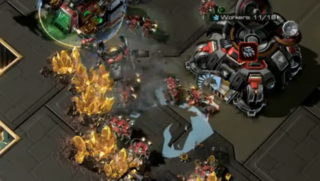
This isn't entirely new territory for a Blizzard game, as StarCraft 2 has featured branding integrated into the existing maps. This is important as it encourages teams and organizers to support the game as they have another metric to point to in terms of brand visibility when courting sponsors. Even better would be if Blizzard found a way to allow teams to create their own banners which could show off sponsor names during games, as again we see in Dota 2. These could be integrated into special versions of the game boards, which would need to be reconfigured anyway for use in a stable spectator format which showed both players actions and options within the game. Tournament organizers would likely want their logo’s on the middle of the playing field, which should be possible to accomplish without being too intrusive.
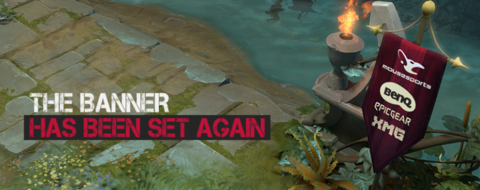
This, of course, doesn't have to be the extent of cooperation shown to tournaments and teams. While control of the Warcraft brand is important to Blizzard and the community likely would not look kindly upon attempts to insert entirely foreign elements into the gamespace, this does not preclude third parties from working together with external artists to create propositions for game boards or cardbacks which would stay true to the Warcraft mythos. Say for example Jason 'Amaz' Chan partnered with an artist to create a Firelands themed board with a Ragnaros that you can click in order to shoot a ball of fire at your opponent, akin to the Catapult outside Orgrimmar. This provides a means for notable figures to monetize their brands, for fans to interact with their favourite teams and players and for organizers to potentially create tournament bundles to help promote their content. And of course, Blizzard gets a cut from everything, making it more than worth their time. As long as Blizzard maintain creative control and communicate with these individuals who want to create content to be sold within the game, ensuring that the Warcraft brand is treated respectfully and that they retain control of themes intended for future expansions (Firelands seems an unlikely expansion for example as Ragnaros already is within the game), there is nothing but benefits to be reaped by all parties from this kind of interaction.
Finally we should mention the "Team Pennant" system that Dota 2 introduced for the second International back in 2012. While this system has not been utilized properly in Dota, the idea to allow fans to support their teams inside of the game by buying something which they can show off and which may confer some benefits from watching said teams games inside the client is a very good one. Within Hearthstone this concept could easily be rolled into the idea of having team logo cardbacks that fans could buy. How these would be integrated and utilized further is a topic I'll leave up for the community to debate as no true best solution has been found yet within the other esports games nor do I have a well suited answer at hand at this time.
Creating a tournament system
The final point is a lesson that comes from a game called Bloodline Champions. BLC was not the biggest of titles, but they were kept afloat by having an integrated tournament system which fostered a very healthy competitive community for its size. This is also one of the lessons that few games have managed to learn, with only James ‘2GD’ Harding who originally created the BLC tournament system having shown the foresight to press to include it in his game, the still in development Quake style FPS game Reborn.
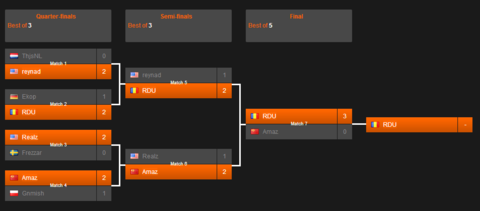
In effect, a tournament system would allow tournament organizers to forego using third party sites in order to manage their tournaments. If done properly, it could become a godsend for the competitive community. This means it would need to be able to create and manage all types of popular tournament formats, including the option to seed players manually, by random draw or weighted draw. Players could create and submit their decks through this system and would be locked in to play these decks once the tournament started, simplifying the process considerably for tournament organizers. Fans could follow the progression of the tournaments from an integrated overview, which again offers possibilities for integrating tournament and team branding into the game.
This would also open things up for Blizzard to run their own weekly or monthly cups alongside the regular ladder season. For a small buy-in akin to the Arena system players could be part of an open bracket tournament, which surely would appeal to many of the casually competitive players out there and increase the longevity and draw of the game. Proceeding far into the tournament would net you gold and potentially special tournament participation and achievement cardbacks, akin to the legendary cardback from the ladder. In the name of this being fair, this would also call for the ability to use “tournament decks”, drawing from the complete cardpool as made available to that tournament in particular. This effectively means establishing similar conditions as Blizzard has done for Arena tournaments over in World of Warcraft, and eliminating the stigma of “pay to win” that card games tend to have within the competitive field.
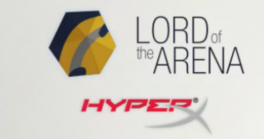
The option for tournament organizers to exclude certain cards by rarity or by expansion would create for more interesting niché tournaments down the road, such as the “Neutral Commons Only” tournament organized via Reddit in the past or vanilla tournaments once expansions arrive into the game. Being able to tailor the rules of the game for a tournament could also change the nature of the game. The most obvious here would be to allow for the Arena Draft style tournament, which at this time is effectively impossible to conduct but which Andrey 'Reynad' Yanyuk proved convincingly has considerable draw among fans of the game. But this could also enable other interest tournaments, as long as tournament organizers are given enough room to experiment with the basic rules of the game, by for example changing the number of same cards that can be in a deck (in general or according to rarity), or having a dust cost upper limit or total amount of legendaries limit on the decks. Greater freedom would almost certainly guarantee that, as Blizzard loves to state about their World of Warcraft raiding guilds, their users would surprise them and come up with solutions they had never thought of themselves.
The hidden benefits
I’ll end by discussing the greatest arguments from Blizzard’s standpoint why they should push for these competitive quality of life improvements within the game. For Blizzard, the fundamental concern is to create a game which can make them money. Beyond the several proposed new sources of revenue, these features serve to engage people within the game client, to hold them there and to encourage them to play more. Say if you are watching a tournament game from within the client, see someone play an interesting deck and want to try it out yourself, if that deck has been published through the tournament you might be able to click that decklist and import it into a new deck of your own, provided you had the cards for it, and go right ahead and try it out on the ladder. Or there might be a slight delay between games in a tournament you are watching, well what better way to spend the time than to play a game of Hearthstone, especially when you've already got the client open in front of you!

With tournament tickets in place, it is also only natural that the games should be stored and made available as replays for ticket holders to watch within the game at their leisure. Potentially creating such a replay system could have other positive externalities, for example Blizzard could store all players replays for a limited time (or forever if they so chose), allowing for individuals to more easily review their own play and potentially invite friends or teammates to watch a reply together with them. This helps foster community interaction and bring a social aspect into an otherwise heavily single player orientated game. Allow for this type of coaching of new players would also help with recruitment of said new players, as their friends could help bring them up to speed and teach them about the game, point out key misplays and generally share in their friends adversities and triumphs. And naturally, a replay system would also multiply the stream of funny and lucky plays flooding Reddit many times over.
Also by allowing players to create decks from the totality of cards available in the game for tournament games, they may try out decks they've always wanted to play, for example putting together that Amaz Priest deck or trying out Control Warrior or Ramp Druid, decks that might otherwise be fairly expensive for many casual players to create. After having had a chance to try them out in the tournament system, they might realize that they enjoyed playing the deck but that they lacked practice, and they might go out and buy some packs in order to speed up creating these decks for themselves for use on the ladder. And so the cycle would flow, giving a chance to try out ideas for a relatively cheap cost, fostering the competitive element and allowing people to engage with the game in more ways than before, all eventually leading to one thing. Hearthstone becomes a bigger, better competitive game. And Blizzard reaps the monetary benefits.

